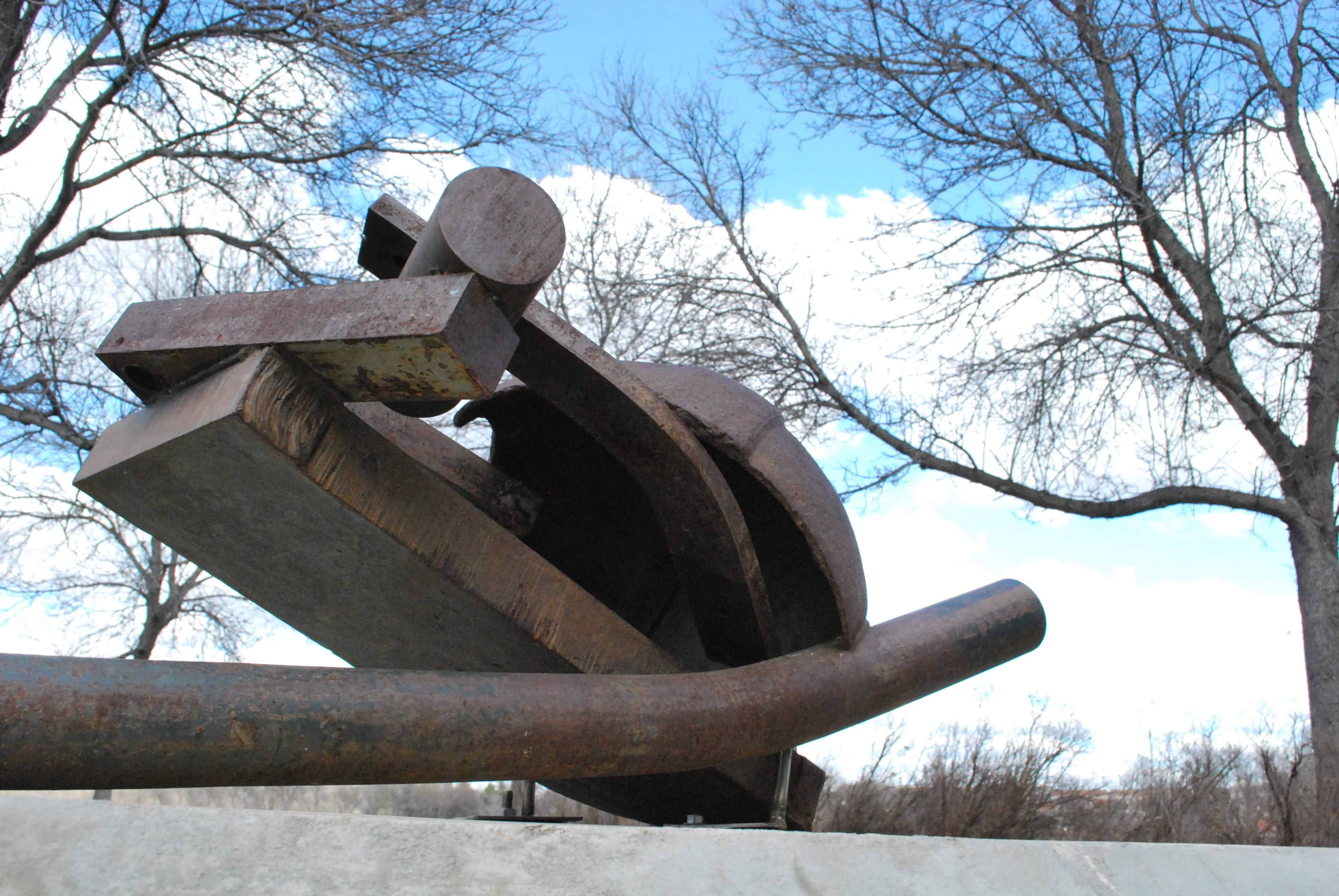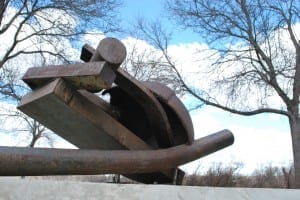Some really weird art

Arbitrary or expressive?
Let’s face it, art is confusing. Abstract work in particular can be powerful, or it can be empty, evoking no emotion or thought other than, “What is so great about it? Even I could make that.” I’ve heard more than one person attempting to justify their blatant derision of abstract or modern artwork with a similar phrase.
While I am an ardent lover of art, no matter the style or medium, I must agree that there are times in which I wonder where the line is drawn between art and creativity. Creativity is a necessary element of art, but art is not always a product of creativity…or is it?
The ‘what is art’ discussion is not new, nor is it likely to end anytime soon because of works of art that push the boundaries of our expectations and notions of art.
“The Outdoor Sculpture Garden Self-Guided Walking Tour” at the MacKenzie Art Gallery is an exhibit that keeps you questioning your own notions of abstract art. The exhibit leads visitors’ attention to the nine sculptures that surround the T. C. Douglas Building.
The sculptures are not immediately beautiful like the Winged Victory of Samothrace or Michelangelo’s David and seem quite simple, some perplexingly simple.
Upon reading the exhibit guide, however, the sculptures change before your eyes. What was once just weird now holds meaning thanks to a few words of context.
Some of the sculptures on the tour are well known. Ancestors Rising, the one with four horns emerging from the ground to hold up a basket of stones, and the bull, calf, and cow (Potter, Teevo, and Valadon) are the most recognizable; they are on the gallery’s front lawn and cannot be missed as you drive along Albert street.
But, the bulk of the sculptures are hidden at the back of the building, and they become increasingly strange as you venture through the garden.
Perhaps the strangest is Tim Scott’s Mudra IX. Mudra means a symbolic gesture or posture in Sanskrit. It is a fitting name given the abstract nature of the work, but I couldn’t accurately explain the sculpture’s symbolism. The exhibit guide did not offer a sufficient explanation of what the steel parts were fused together to symbolize.
As I walked around, exploring various perspectives, I began to imagine countless different objects and meanings that the sculpture could represent. But, but I kept wondering what the artist’s purpose was.
Sure, I could see a hand, an army helmet, or simply a pile of steel, but what did Tim Scott see? It left me puzzled, but it also created a challenge. My imagination was let loose as I struggled to find the meaning behind the Mudra IX. I wasn’t satisfied without a clarified interpretation.
I could not discern why Scott piled those pieces of steel in the way that he did, and my imagination was determined not to let me down as I thought of ridiculous idea after ridiculous idea.
After fabricating a sufficiently elaborate and eccentric backstory, I realized that I had fallen victim to the power of abstract art without realizing it. Perhaps all that Tim Scott wanted to achieve with Mudra IX was to ignite imaginations. Perhaps abstract artists just want to mess with our heads a bit, and maybe that is a good thing.
I think humans possess a strange need to associate certain and meaningful explications with everything we see. Every so often it can be beneficial to take a step back from explanation and simply enjoy the lines created by a conglomeration of steel and bronze.
Sometimes we like things without reason, and I think that is perfectly all right.










